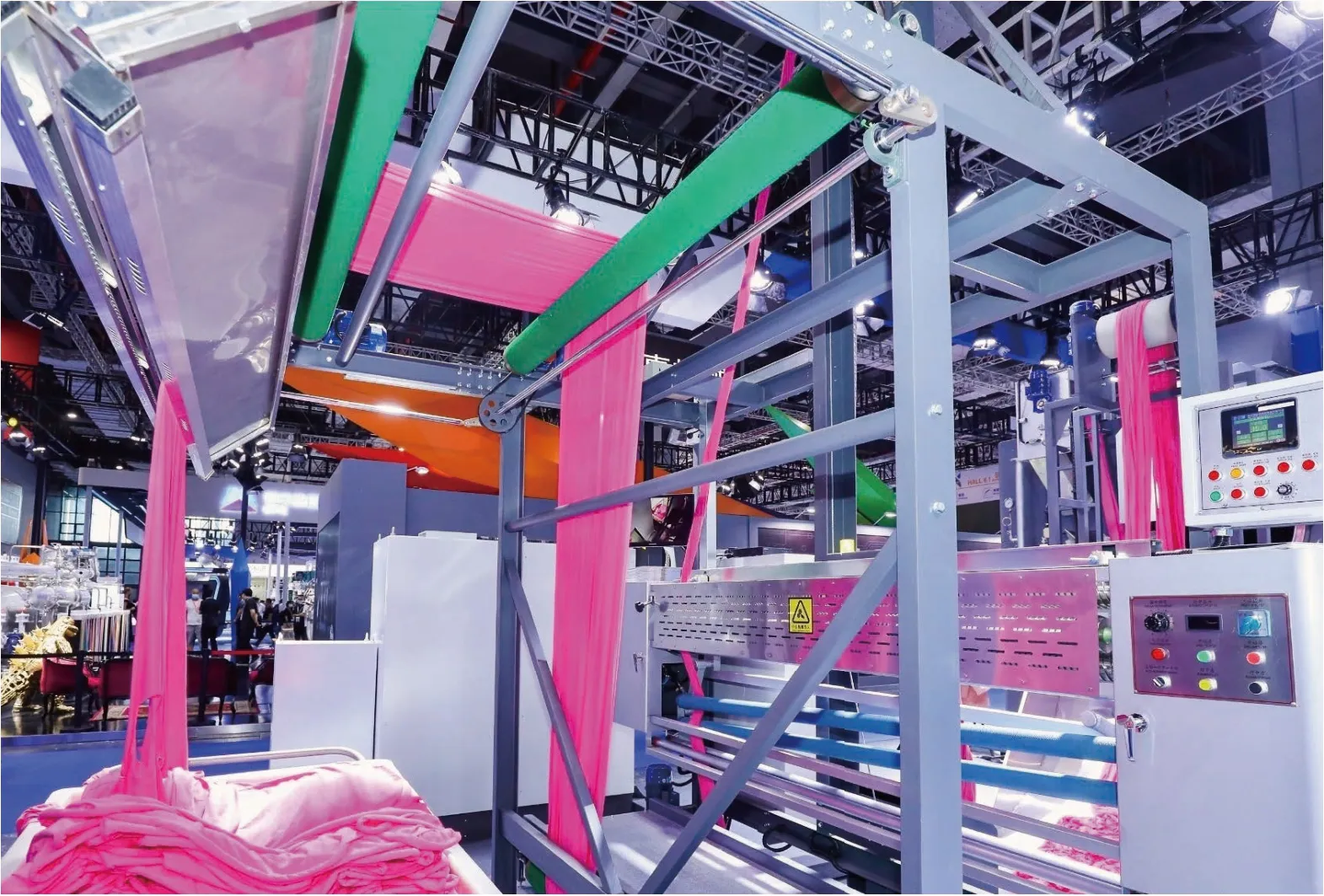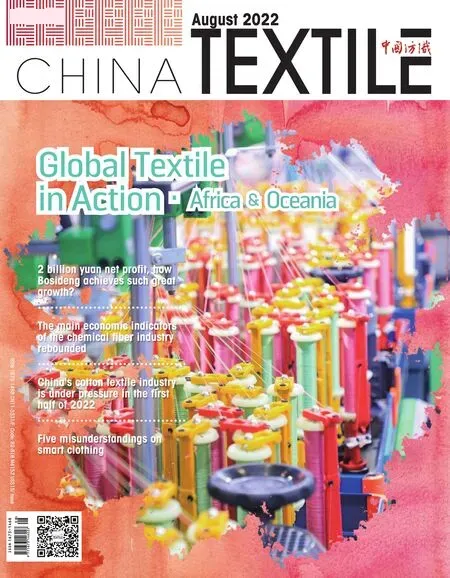China’s textile sector:Innovation highland of Chinese industry
By Zhao Xinhua

As the world’s largest producer and exporter of textilee s and apparel, China has the largest and most compleett e industrial system in the world, including raw mmaatteerriiaall ss upply, design and research, textile dyeing and prriinnttiinngg pprrocessing, three terminal manufacturing, op—eerraattiioonn aanndd retail. Th e Chinese Academy of Engineering released a reepport on the Strategy Research on Promoting the CCoonnssttrruuccttiion of a Powerful Manufacturing Country for 203355.. ThTh rroouuggh comparative analysis of 26 represen—tative manufacturing industries in international manu—facturing powers, the report concludes that China leads the world in the textile and other f ive industries. Th is also means that the goal of China textile power is basically realized, and is a milestone for the textile industry to pro—mote high—quality development through transformation and upgrading.
In 2021, China’s textile enterprises above designated size achieved oper—ating revenue of 5.1749 billion yuan,up 12.3 percent year—on—year; total profits reached 267.7 billion yuan, up 25.4 percent year—on—year; the output of chemical fiber reached 65.24 million tons, accounting for about 70 percent of the world total. The cumulative ex—ports of textiles and apparel stood at USD 315.5 billion, up 8.4 percent year—on—year and hitting a record high...Behind these figures, it is the continu—ous transformation and upgrading of China’s textile industry chain.
The United States, ASEAN, Euro—pean Union and Japan have always been the main export markets for China’s textiles and apparel.In 2021, China’s textile and apparel exports to these four traditional markets totaled USD 172.49 billion, accounting for about 55 percent of global exports. Among them, the United States is the largest exporter of China’s textile and apparel industry, textile and apparel exports to the United States accounted for 18 percent of the total exports of the industry; textiles and apparel exports to ASEAN accounted for 16 percent; textiles and apparel exports to the EU ac—counted for 15 percent; textiles and apparel exports to Japan accounted for 6 percent.
In recent years, due to the trade protectionism,the Sino—US trade friction, COVID–19 pandemic, and Russia—Ukraine conflict, the highly interdependent in—dustrial and supply chains of countries in the context of globalization have revealed the vulnerability, the global industrial chain and supply chain are restructuring and adjusting, with the trend of localization, regionalization and shortening supply chain. Although China is still the primary source of textile and apparel import for most countries in the world, its share in the main international market is gradually decreasing. Th e foreign trade struc—ture of the industry is diversif ied.
In 2021, textile and apparel imports from China ac—counted for about 30.5 percent of the total imports of the United States, down 8.6 percentage points year—on—year and 4 percentage points compared with 2019; textile and apparel imports from China accounted for 34.3 percent of the total imports from non—EU countries, down 8.3 per—centage points year—on—year and up 1.7 percentage points compared with 2019; textile and apparel imports from China accounted for about 55.4 percent of the total imports of Japan, down 3.2 percentage points year—on—year. Mean—while, the trade volume between China and countries along the Belt and Road continued to grow. In 2021, China ex—ported textiles and apparels to 64 countries along the Belt and Road, up 24.5 percent year—on—year and 17.3 percent compared with 2019, accounting for about 36 percent of global exports.
With the entry into force of the Regional Compre—hensive Economic Partnership (RCEP), the RCEP region has become the most important textile and apparel manufacturing center in the world. RCEP members have committed to further opening—up through rules of origin,tariff reduction, trade liberalization and facilitation and other measures, providing China’s textile and apparel enterprises with an excellent opportunity to expand in—tra—regional trade, optimize resource allocation, integrate and strengthen supply chains, and upgrade value chains.
Production capacity cooperation between China and neighboring countries, especially ASEAN countries, in the textile and apparel f ield has been further deepened,and RCEP members have formed a regional industrial cooperation model with obvious advantages. In the f irst f ive months of this year, ASEAN remained China’s larg—est trading partner, with its total trade reaching 2.37 tril—lion yuan, up 8.1 percent, accounting for 14.8 percent of China’s total trade.

Since the second quarter, China’s textile and ap—parel industry has been aff ected by the recurrence of the pandemic, the severe and complex international situation, the rising operating costs and other factors.The decline in the domestic sales market has deep—ened, the export growth has slowed down signif icantly,and the economic operation has been under severe pressure. However, with the gradual stabilization of the pandemic and the introduction of national policies to stabilize trade growth, promote consumption and sup—port enterprises, the industrial chain and supply chain are gradually unblocked, and the vitality of the con—sumer market is gradually recovering.
As an important livelihood industry in China, the textile and apparel industry will continue to focus on technology, fashion and green industry positioning,comprehensively improve the core innovation capac—ity, promote the modernization of the industrial chain;to enhance the ability of sustainable development, and ensure that the industrial system is controllable, safe and efficient; improve the allocation of resources to achieve a more stable and high—quality development of the industry.

